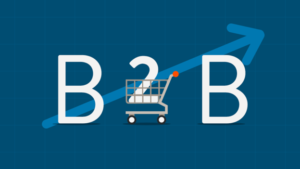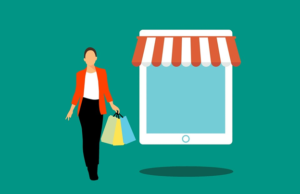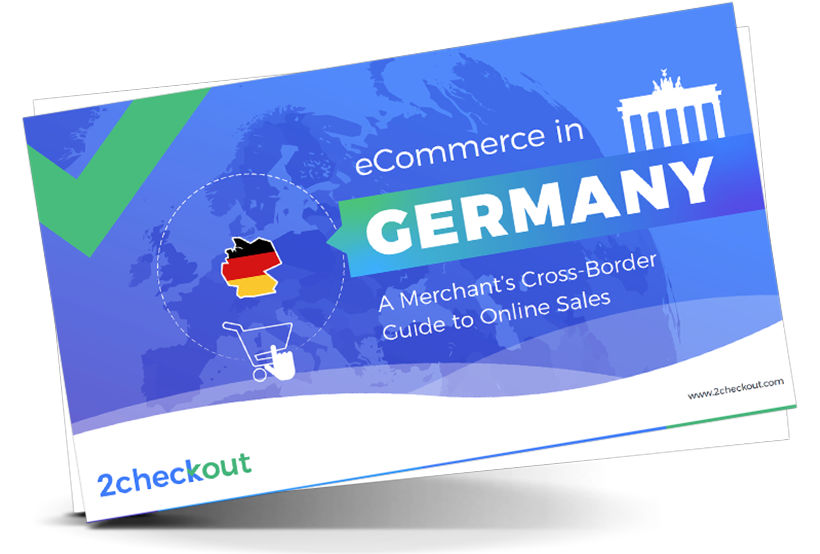With the onset of the global pandemic, online commerce has been growing rapidly, bringing fresh opportunities and opening new markets for merchants around the world.
2Checkout is committed to helping online businesses navigate the eCommerce space, that is why we’ve set off to publish a series of country guides that bring you relevant insights for tackling these markets. The first in the series is on Germany – read on to discover what you can learn from our new resource, “eCommerce in Germany: A Merchant’s Cross-Border Guide to Online Sale”.
Online commerce is growing rapidly in Germany and the opportunities here for merchants are huge. Companies and entrepreneurs can take advantage of the country’s efficient eCommerce ecosystem to attract and convert new B2B and B2C customers, expand their reach, grow revenue, and make their brand stand out in the crowd.
To build a profitable business in Germany, merchants need to understand the country’s specific in terms of online commerce. While the country has one of the biggest per capita purchasing powers and one of the largest eCommerce markets in Europe, there is strong competition from established eCommerce retailers such as Amazon, Zalando, or Otto.
In order to compete – and win – in your market segment, as a merchant you need to take into consideration particularities of the German market. This implies not only understanding how eCommerce functions in this country, but also what buying preferences shoppers exhibit, as well as what legal obligations you need to follow when selling online in the country.
A Mature eCommerce Market
But here’s the good news: beyond challenges, Germany is a leading market in terms of eCommerce, with $100 Billion projected to be spent in 2020 by online consumers. This will place Germany as the 5th largest eCommerce market in the world.
B2B is Taking Center Stage in Germany

Although the country’s online commerce is mostly driven by B2C companies, ranging from consumer goods and services, to fashion to books, to furnishings to home electronics and entertainment, Germany also has a flourishing B2B market that’s projected to grow each year for the foreseeable next 4 years. The software market is one of the main drivers behind B2B and B2C growth, forecast to reach a 7.6% growth rate each year in the next 5 years.
eCommerce Growth Also Driven by Subscriptions
We’ve established that Germany has one of the largest thriving eCommerce markets globally. This is a result of the demand for home goods and fashion, but subscription adoption is also helping the field grow.
In terms of subscriptions, more than half of Germans prefer annual renewals, about 13% prefer monthly plans and will likely renew 94% of the time when this option is provided (Source: 2Checkout’s platform data).

Selling Products and Services Online in Germany
There are several factors to consider when you’re ready to sell products online in Germany. Use our checklist to ensure you cover everything:
Payment Methods Preferred by German Consumers
To fully take advantage of the eCommerce opportunities in Germany, you need to use the payment methods that suit your target audience and you need to provide a wide variety of payment options. At a minimum, five payment options are ideal if you want shoppers to take action.
Some of the popular payment methods used in Germany include:
- Apple Pay, Android, and other eWallets
- Girocard
- ELV
- PayPal
- SEPA
- Paydireckt
- Sofortbanking
- RatePAY

Traditionally, German online consumers used to prefer open invoices up until several years ago. However, PayPal payments now account for 57% of all online transactions in the country. Open Invoices are still common, so be sure to include both in your checkout in the country.
Popular Local Payment Methods in Germany
You can expand your reach even more with local payments. You should include local payment options such as Girocard, and/or Sofortbanking, to improve your checkout conversion rate.
It gets even better when you use 2Checkout to sell online. You can offer the Sofortbanking option and increase your conversion rate by up to 50%.
Security is a Must
When selling online in Germany, keep in mind that consumers are very cautious with their data. As online fraud and misuse of sensitive consumer data and personally identifiable information (PII) continue to escalate around the world, shoppers are skeptical of online stores, especially in this market.
The good news is that there are many privacy and consumer protections in place, to safeguard the eCommerce ecosystem. Apart from this, shoppers also tend to prefer payment methods perceived as secure. This is the reason we see such marked preferences for payment methods like Open Invoices and “buy now, pay later” in this market.
The Checkout Experience is Paramount

Online shoppers aren’t just looking to buy a product or service, they also want a good experience.
German online buyers are unique and they have clear expectations in terms of checkout experience.
For example, they want sellers to use German language, local pricing, and also include popular local payment methods in the checkout. They are also keen on delivery, speed, and transparency. If you can cater to these needs, you’ll find that when Germans perceive a merchant as trustworthy, they’re willing to spend more per session. At an Average Order Value (AOV) of approximately $157, this is higher than what shoppers in other countries (e.g., US) spend with an online store.
Know Your German Regulations
As we’ve established, online shoppers in this country have high expectations in terms of online shopping transparency. To address these needs, be sure to also include both the tax and shipping in the total price.
Germany exacts a 19% VAT on all taxable goods and services, although some items, such as books and other media, food and medical supplies, short-term lodging, etc., are taxed at a reduced rate of 7%. Given the pandemic context, VAT in Germany will be reduced to 15% and 5%, respectively, until the end of 2020.
Don’t forget also that German buyers want accurate delivery estimates. No approximations, whatsoever.
German law actually requires the seller to provide the buyer with a clear itemization of the good or service being purchased, total price inclusive of taxes, handling, and delivery charges, and, if applicable, the terms of the contract and termination conditions.

When you set an online shop in Germany, it’s important to keep a few things in mind. You’ll find that in this market it’s necessary to provide an “Impressum” or legal notice that includes company information, which must be displayed for buyers to see. The legal requirements you must follow depend on your industry and business models, however, the notice must generally include:
- Details about the legal owner or operator of the online business/website
- Contact information: This includes email address and phone number
- German trade register number or domestic equivalent VAT or business identification number
- Professional association or titles
As an online seller, if you don’t prominently display the Impressum and abide by all other legal obligations, your business could be subject to hefty fines and other sanctions.
Conclusion
Ready to sell online in Germany? It’s quite easy when you sign up with 2Checkout, a leading eCommerce payment provider for global businesses, who knows all the ins and outs of the country’s online commerce system.
To get the full picture on selling online in Germany, read our full analysis and insights in our new eBook “eCommerce in Germany: A Merchant’s Cross-Border Guide to Online Sales”.






